By embracing innovation, Dr. Hak Choy has built one of the nation’s leading centers for radiation oncology treatment
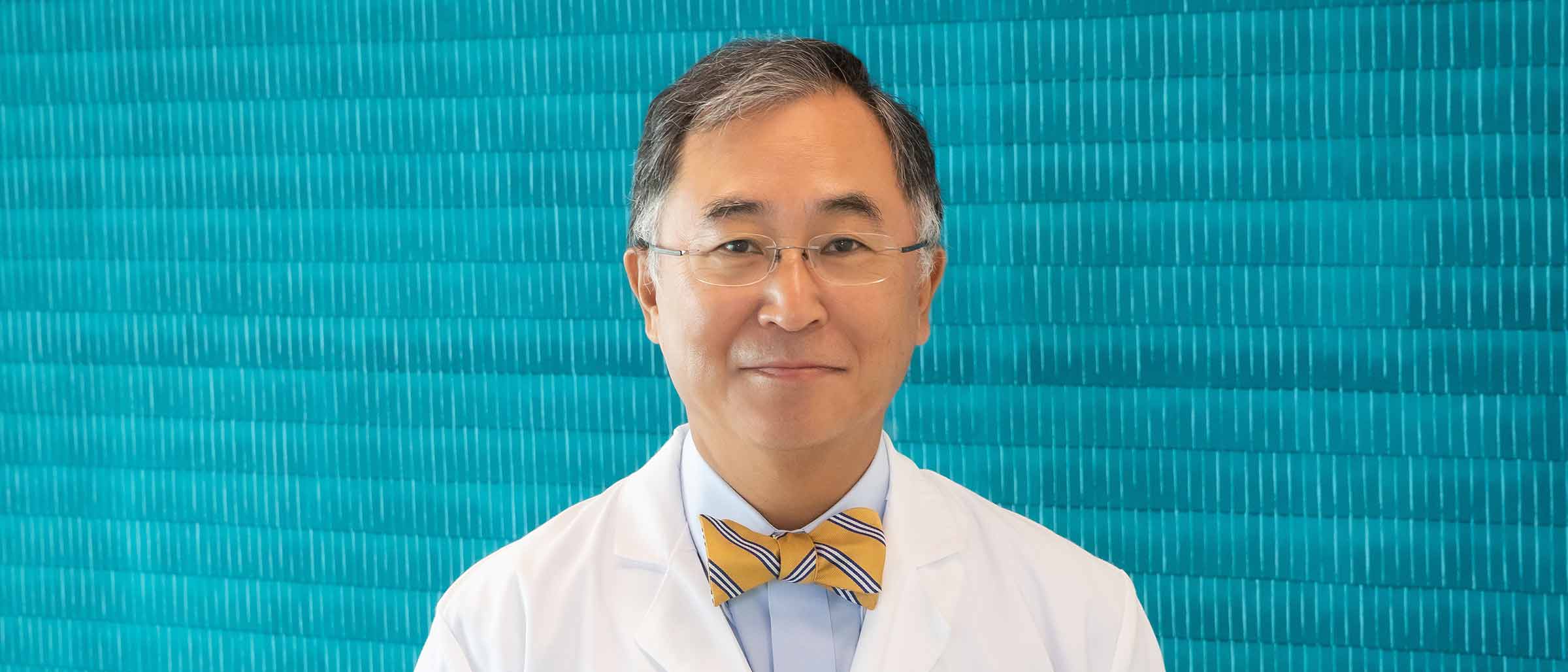
At age 20, Hak Choy traveled halfway around the world from South Korea with just $20 in his pocket and a dream to attend college in America and become a doctor.
Ten years later, Dr. Choy was a radiation oncology resident at UT Health Science Center in San Antonio with his own small lab, working with Dr. Daniel D. Von Hoff, his mentor and a world-renowned medical oncologist. There, he began examining how cancer drugs interact with radiation – research that would become the foundation for his groundbreaking findings. His research showed that the chemotherapeutic agent paclitaxel could be safely combined with radiation therapy to magnify benefits. Before Dr. Choy’s work, many considered this combination therapy a radical and even dangerous idea.
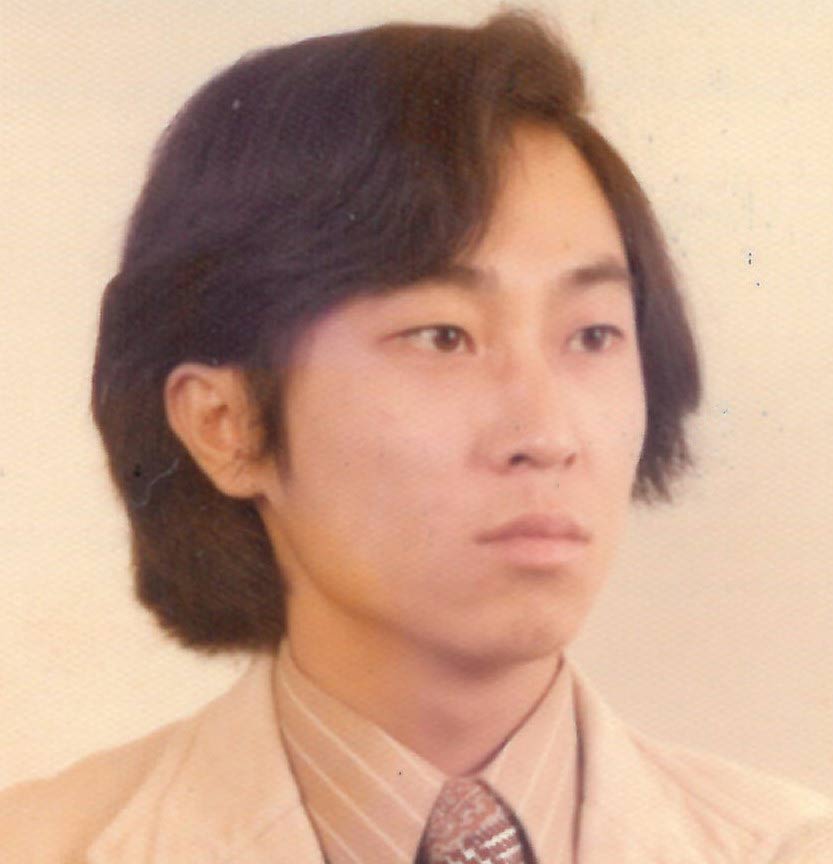
Today, 41 years after arriving in the U.S., Dr. Choy is internationally known for research studies showing that many new chemotherapeutic agents and radiation can be used together to increase the odds of cancer survival. These studies have resulted in changes in the standard of care worldwide. He also built and chairs an innovative Radiation Oncology Department, working at UT Southwestern with a team of like-minded medical pioneers.
When Dr. Choy joined UTSW as Chair of Radiation Oncology in 2003, the Department had eight faculty members. It has since grown to more than 70 faculty members today. Meanwhile, patient volume has increased five-fold, with 3,500 patients cared for during the most recent fiscal year. In addition, a heightened emphasis on the education and training of future radiation oncologists has attracted highly qualified applicants.
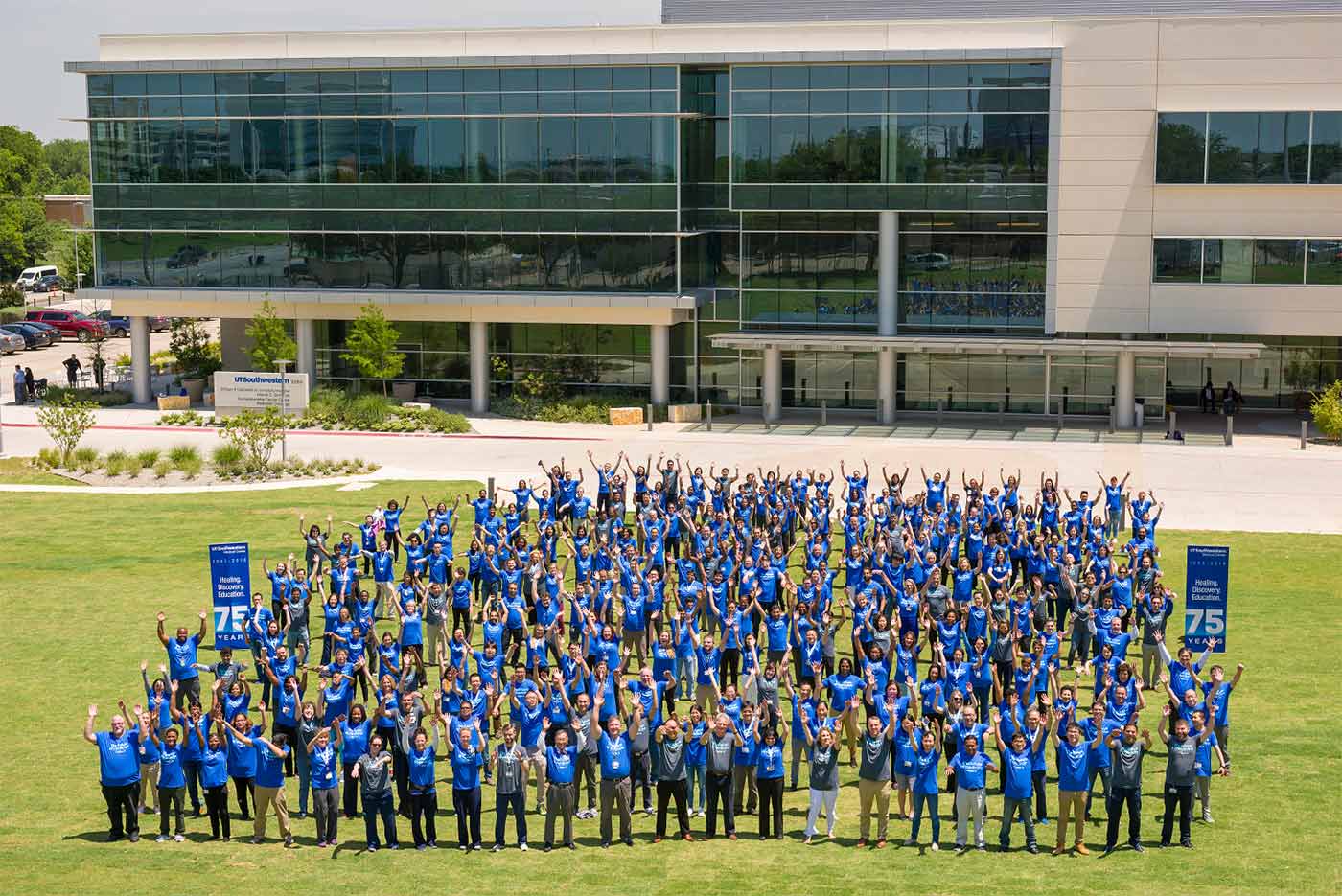
Along the way, the Department has become a research powerhouse. Radiation Oncology faculty brought in more than $5.2 million in National Institutes of Health (NIH) grant funding in fiscal 2019, placing it eighth among medical school-based departments, according to an analysis of NIH data.
Drs. Robert Timmerman, Steve Jiang, and Michael Story are among the top researchers.
Dr. Timmerman is celebrated as a pioneer in stereotactic body radiation therapy (SBRT), a procedure that uses multiple beams of precisely targeted, high-dose radiation to kill cancer inside the body. Dr. Jiang is a medical physicist and recognized leader in developing artificial intelligence tools to battle cancer; one example is the innovative use of computer graphics processing units for faster and better imaging to optimize cancer radiation treatment. Dr. Story was recruited from UT MD Anderson Cancer Center in 2004. His laboratory research has led to clinical trials in radiation oncology for pancreatic, lung, and brain cancer.
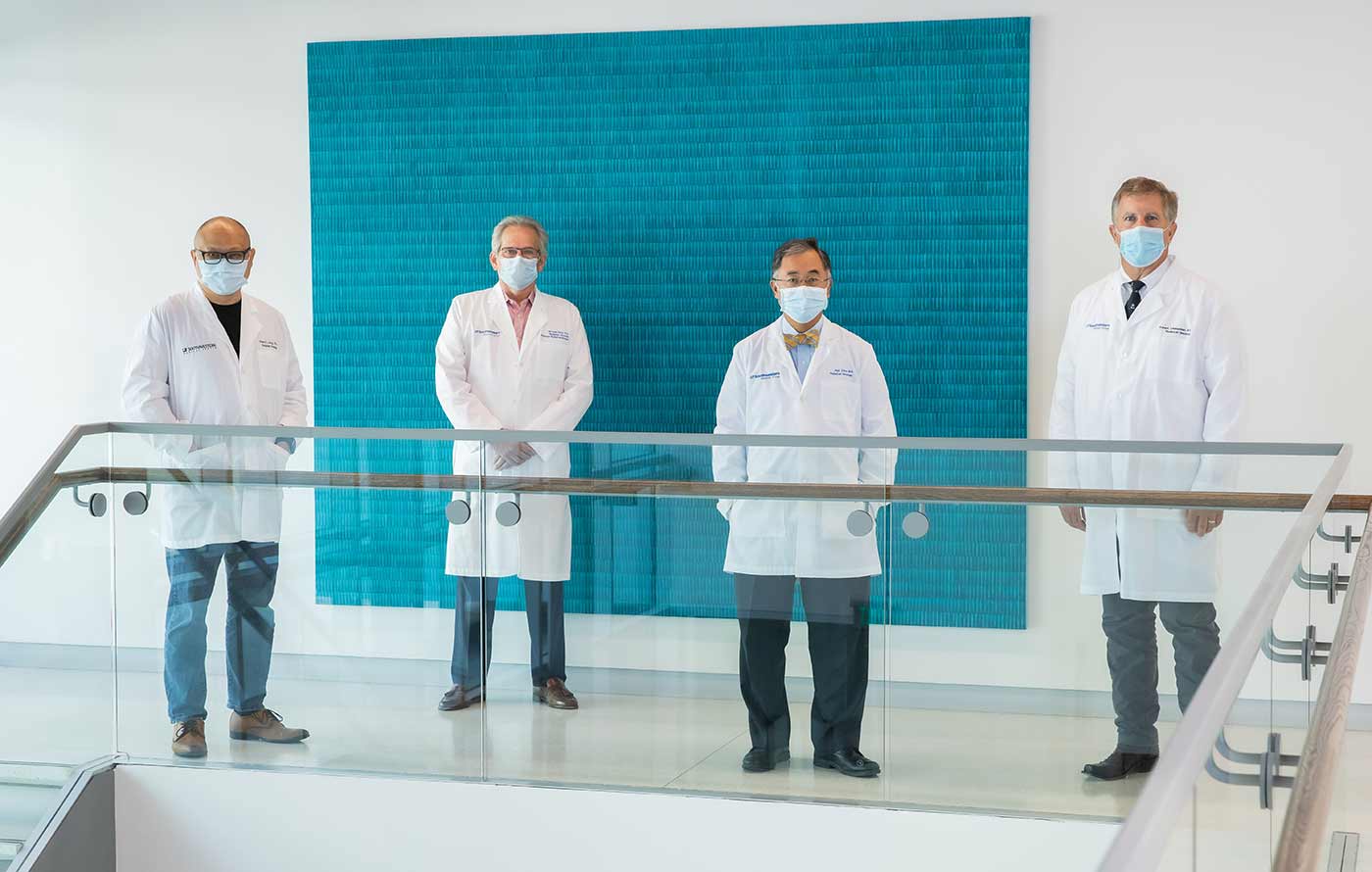
In 2017, UT Southwestern became the first medical center in Texas – and second in the nation – to add a Gamma Pod, the first SBRT system optimized for treating breast cancer. This treatment has been found to be more effective and efficient, with fewer side effects. The Gamma Pod uses a multisource Cobalt-60 stereotactic radiotherapy system that rotates continuously, creating thousands of beam angles that combine with one another to create an intense focal spot.
The goal is to destroy a patient’s cancer as quickly as possible, using fewer treatments, without the traditional monthslong radiation treatments, Dr. Choy said. “We have advanced technology and have developed techniques to shorten treatment duration,” he said. UT Southwestern cancer patients now undergo an average of 14 radiation treatments compared with a national average of 28, freeing patients from many stressful return visits.
“Someday, if I realize my vision, the patient will come in just one day and be treated and be done with it,” Dr. Choy said.
Testing a cancer treatment theory
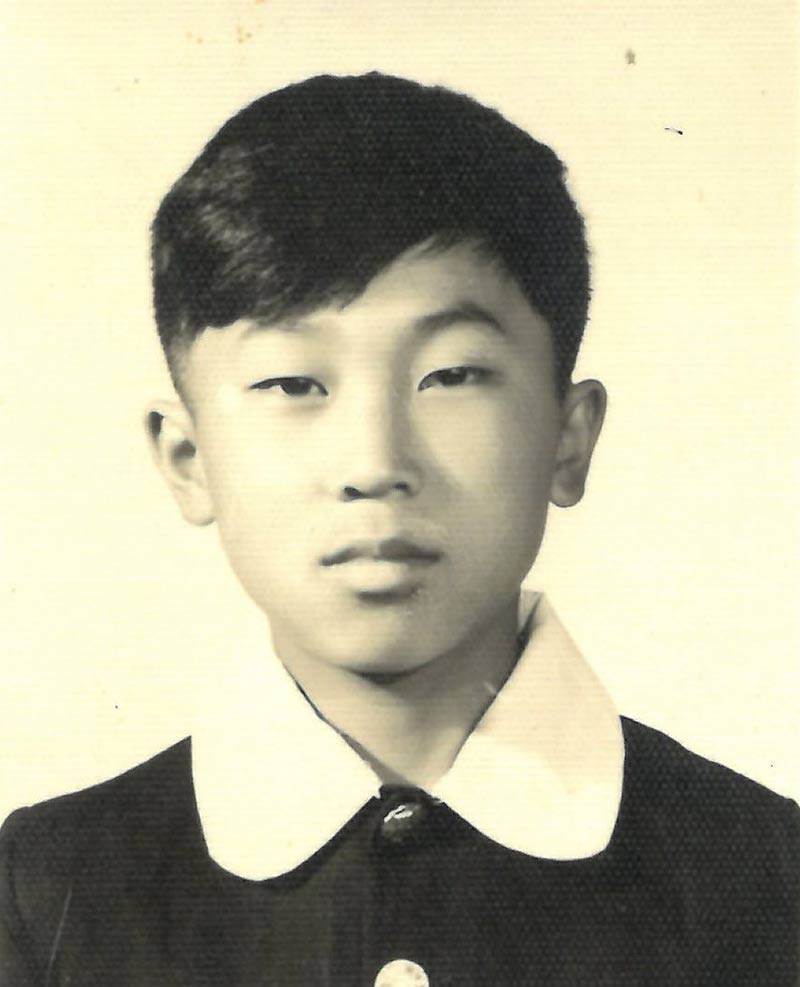
If single-day cancer treatment sounds like a fantasy to some, Dr. Choy understands that asking radical questions leads to innovation.
Growing up in South Korea, Dr. Choy was the youngest of five children whose father, a doctor, died when he was a toddler. In his country, it is a custom that one child carries on the family business or profession – and in Dr. Choy’s case, that responsibility fell to him.
After arriving at UT San Antonio, he needed a job. Dr. Choy also knew he would need recommendations to get into medical school after college. The combination led him to work as a lab technician for a researcher studying cancer drugs in Dr. Von Hoff’s lab.
In the lab, he gained knowledge of the latest cancer drugs and became interested in learning how those drugs interact with radiation, leading him to specialize in radiation oncology after graduating in 1987 from UT Medical Branch School of Medicine.
In 1992, Dr. Choy left San Antonio’s Health Science Center to become a Clinical Assistant Professor at Brown University’s Warren Alpert Medical School, where his wife, Dr. Sunjun Kang, a neonatologist and now an Assistant Professor of Pediatrics at UTSW, had been offered a fellowship. At Brown, Dr. Choy decided to test his theory about combining paclitaxel and radiation in lung cancer patients, a group with poor prognosis.
At that time, many physicians thought adding weekly chemotherapy to the radiation regimen would destroy bone marrow cells, damage the lungs, and possibly lead to death – despite no evidence of that.
Dr. Choy designed and conducted the very first clinical trial combining paclitaxel and radiation in cancer patients. “The nurses and some physicians at Brown were afraid to try,” Dr. Choy recalled. “This was such a new approach with a new drug.” After noticing that not a single patient was being enrolled by the staff, “I went to the cancer clinic every day for a month to help them enroll the patients,” he said.
In the end, Dr. Choy’s research found that toxicity from the combination therapies was acceptable and the overall outcome for lung cancer patients improved. The study was published in 1994 in the Journal of Clinical Oncology. That study was followed by others looking at the effects of concurrent radiation and chemotherapy treatment in other cancers (usually with the drug paclitaxel, or Taxol), making him a pioneer in the field of combination therapy. “That’s how I got started,” Dr. Choy said.
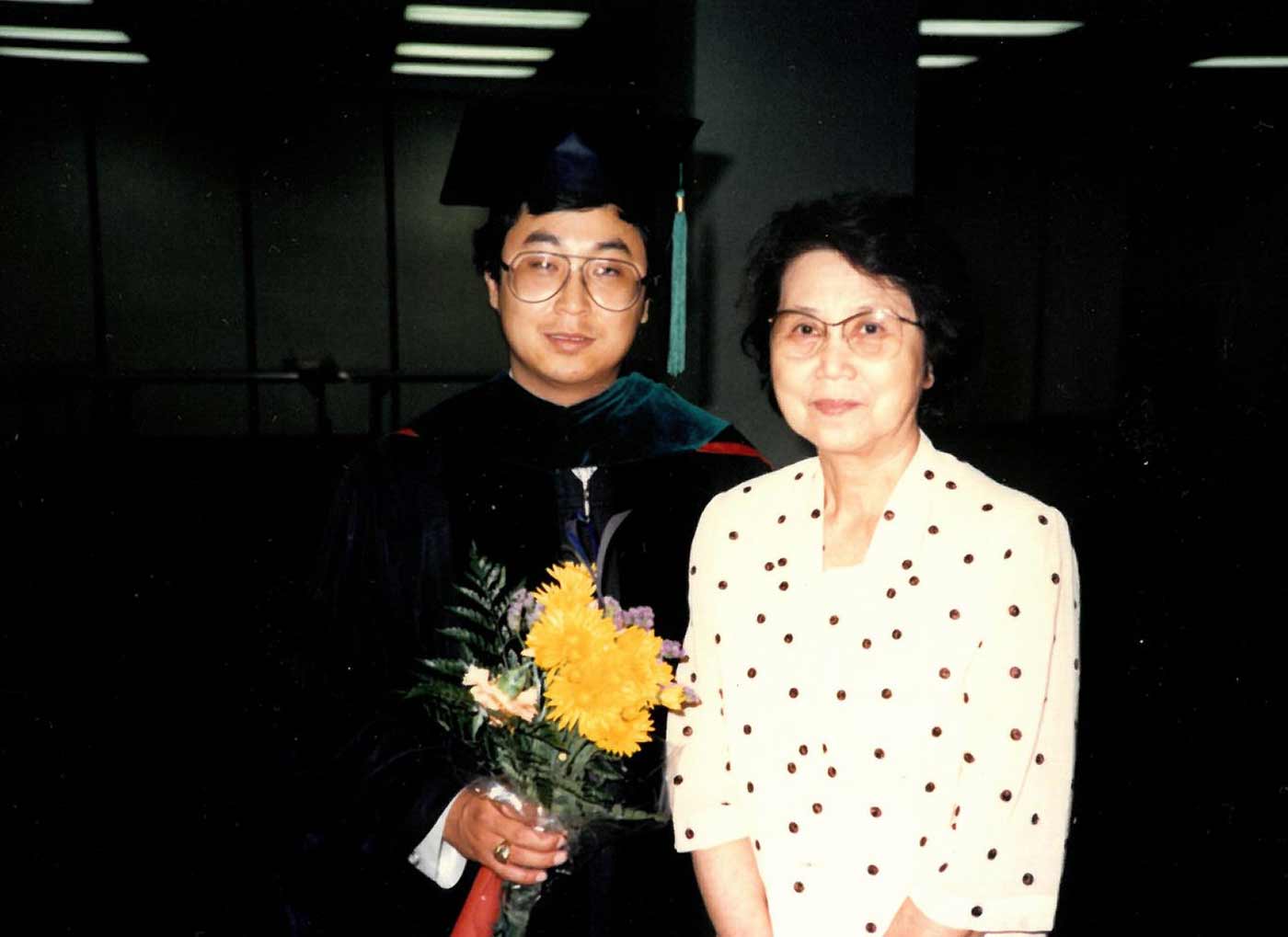
An invitation to join Vanderbilt University School of Medicine as an Associate Professor and Clinical Director of its radiation oncology center followed in 1995, then a promotion to full Professor and Vice Chair of the Department of Radiation Oncology three years later, when he was only 40 years old.
At the national level, the influential NIH-funded Radiation Therapy Oncology Group (RTOG) appointed Dr. Choy Chair of its Lung Committee. “We developed many pivotal nationwide clinical trials in lung cancer,” he said.
It was in an RTOG meeting that he met Dr. Timmerman.
Exploring a novel radiation therapy
Dr. Choy heard Dr. Timmerman speak about his research using high-intensity radiation treatment that is precisely delivered to kill cancer cells while sparing the adjacent healthy tissue. Stereotactic, or precisely placed, radiation was made possible by using modern three-dimensional medical imaging to treat cancers in the brain. However, this novel technique was not an accepted treatment for other organs that move during breathing and food digestion. Dr. Timmerman, who also holds degrees in nuclear engineering and reactor physics along with his medical degree, had figured out a way to limit motion and to provide this intense therapy safely.
With ultra-high doses of radiation, fewer treatments were needed. Patients didn’t have to recover from the pain of surgery. And those with inoperable tumors suddenly had another option.
Dr. Choy invited Dr. Timmerman to appear before his RTOG Lung Committee, hoping it would lead to a nationwide trial of this new approach.
Just like Dr. Choy’s earlier idea of combining chemotherapy and radiation, this was a radical concept that met with resistance.
“But he had all the preliminary data showing that what he was doing was credible. The data is provocative,” Dr. Choy remembers thinking.
SBRT therapy gains ground
It took a few years to win approval from the National Cancer Institute (NCI) and the Food and Drug Administration for a trial. By then, Dr. Choy had not only become Dr. Timmerman’s supporter – he had recruited him to UT Southwestern, where Dr. Timmerman is now a Professor of Radiation Oncology and Neurological Surgery.
In 2004, the first U.S. multicenter trial to test SBRT began with 59 patients who had inoperable early stage lung cancer. The results were published in JAMA in 2010, listing Dr. Timmerman as first author and Dr. Choy as senior author.
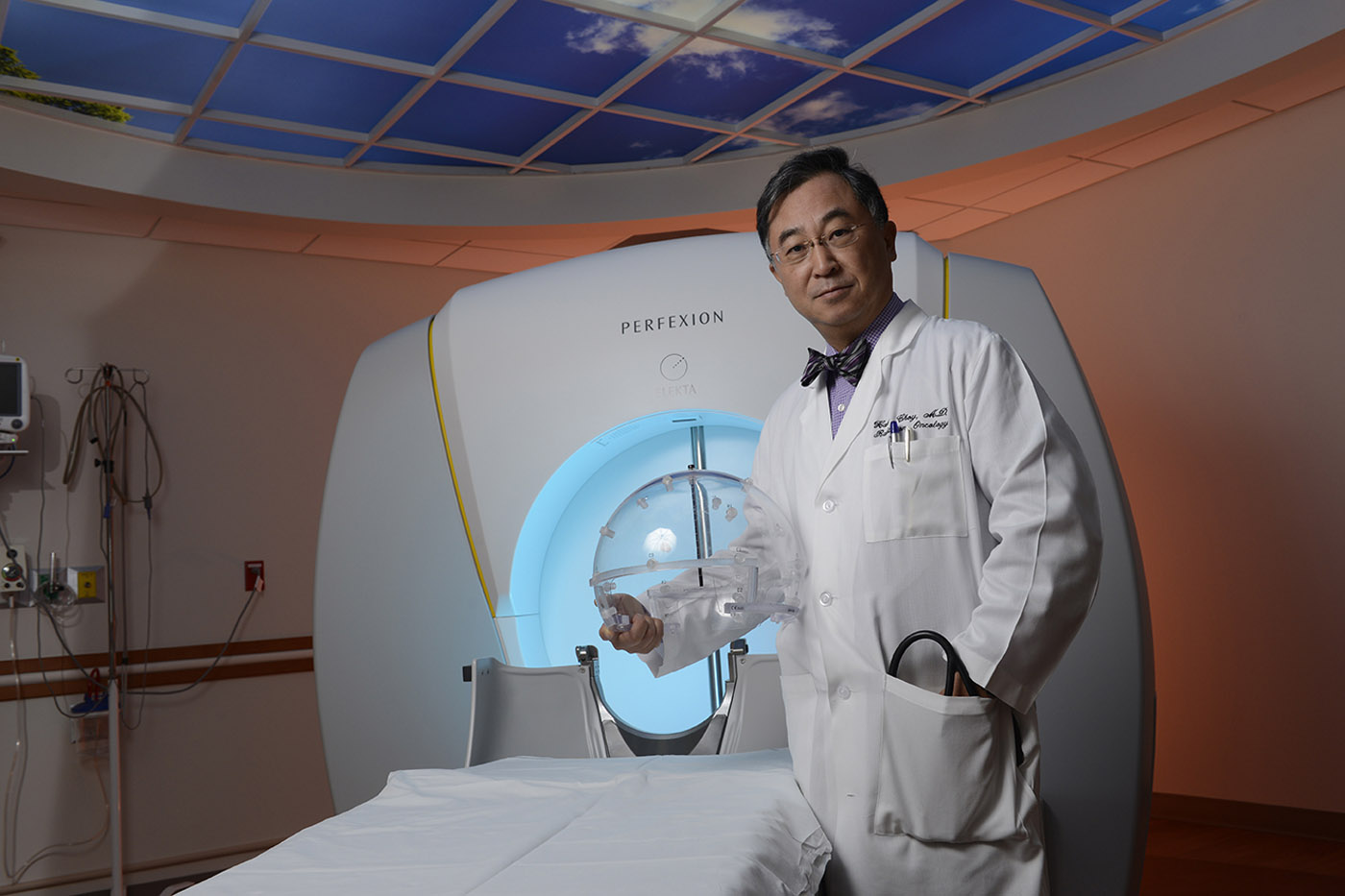
The study showed a three-year survival rate of almost 60 percent versus the 20 to 35 percent then seen with traditional treatment. SBRT accomplished this with three treatments instead of the 20 to 30 usually given with conventional radiotherapy, according to the study.
The findings were astounding. The result of this study, RTOG 0236, has become well known in the field of radiation oncology, Dr. Choy said. “It changed the practice pattern globally because the outcomes were way better than anyone anticipated.
“That is probably one of the most important trials in radiation oncology lung cancer during the past few decades. It sets the new standard,” he said.
“In 2000 – 20 years ago – nobody in this institution got SBRT (also called SABR) treatments,” said Dr. Timmerman. “Now many cancer patients here get SBRT.”
This represents a sea change for many older patients who get cancer, Dr. Choy said. Their chances for survival are better, and they don’t face 30 trips for radiation treatment. Instead, they often can be treated in as few as one to three sessions, he said. In addition, new research is showing another benefit of killing the cancer with radiation rather than removing it via surgery, he added. Left in place, the dead cancer cells can act like a vaccine to trigger the immune system and help fight the cancer’s spread, Dr. Choy said.
Embracing change for the greater good
Dr. Timmerman looks back on the resistance he and Dr. Choy faced early on. “Sadly, you sometimes get aggressive pushback when attempting to change the current practice of medicine. Competence performing today’s version of therapy is so hard-earned for many doctors, they simply don’t want to hear about new therapies that might make their skills obsolete,” he said.
But for Dr. Choy, whose father died of cancer when he was a child, finding better outcomes was non-negotiable.
In the early days using SBRT, health insurance companies often refused to reimburse UT Southwestern for the new treatment, said Dr. Jiang, Director of the Division of Medical Physics and Engineering and Vice Chair and Professor of Radiation Oncology. But Dr. Choy persisted.
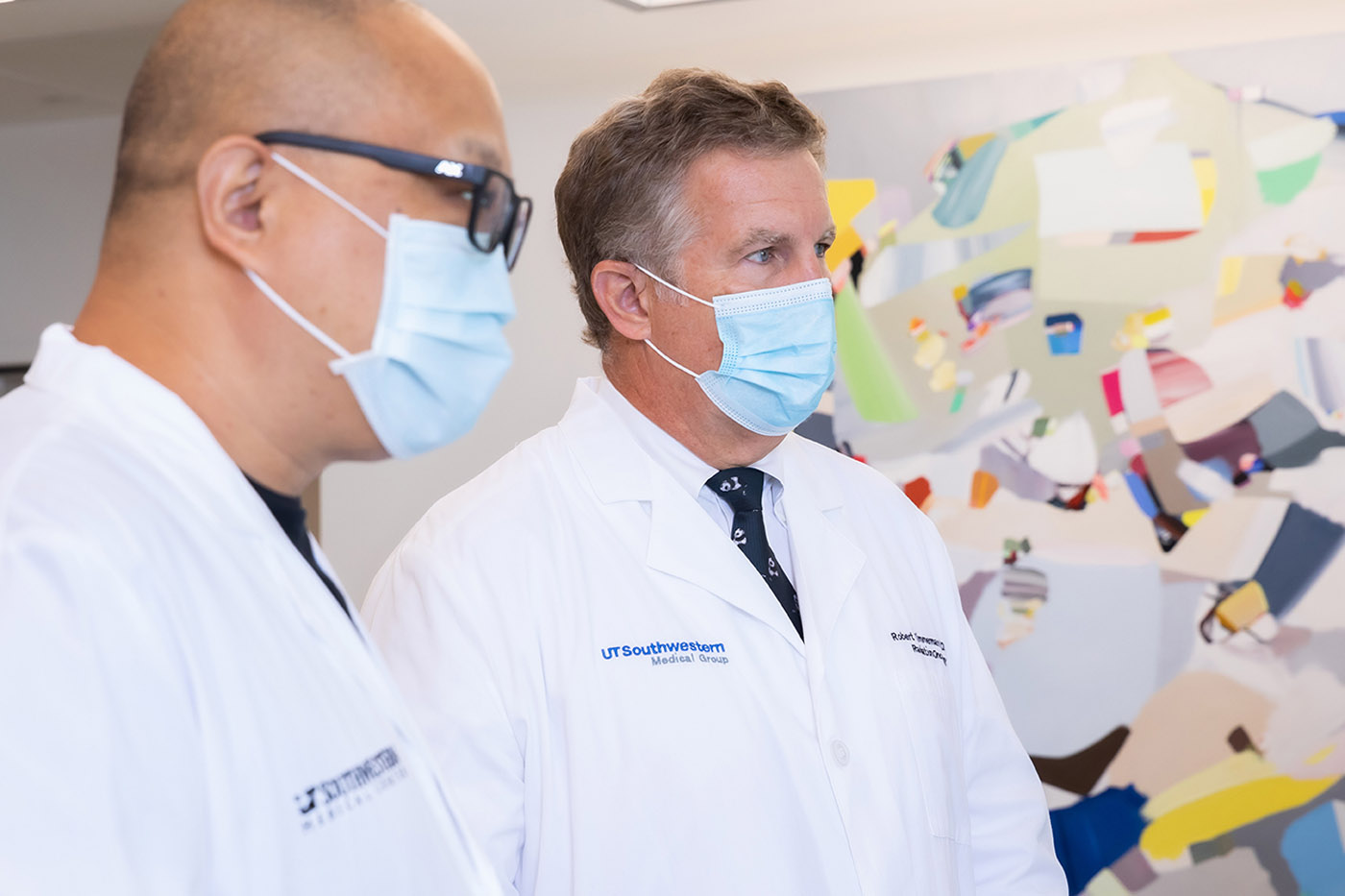
Dr. Jiang witnessed the same determination when Dr. Choy was recruiting him. At the time, Dr. Jiang worked at UC San Diego, where he was a tenured professor directing the Center for Advanced Radiotherapy Technologies. “When he first approached me, I said, ‘No way am I going to leave San Diego.’
“He said, ‘Oh, just come and take a look.’” It required a second visit, but in the end, Dr. Choy prevailed.
“I made the right decision,” Dr. Jiang said recently. “Many Chairs, they do things in the comfort zone and they will improve care a little bit here, a little bit there. Dr. Choy likes to do things on the boundary between the possible and the impossible. When you succeed, you actually make the impossible possible.”
Said Dr. Timmerman: “We’ve tried to create nothing but incentive to change. Dr. Choy wants us to think about what is the next paradigm to improve outcomes.”
“Dr. Choy has always tried to provide us the tools and the space to test our ideas and to push boundaries,” said Dr. Story, Vice Chair and Chief of the Division of Molecular Radiation Biology, and Professor of Radiation Oncology. “The expectation is that we will be successful. So far I would say that we’ve done well for ourselves.”
As for the future, new and even better linear accelerators – the machines that speed up subatomic particles to produce the radiation for SBRT – are on the way. Another seven are expected later this year – including two $10 million machines that combine MRI visualization with radiotherapy so the radiologists can see the tumor as they deliver treatment, said Dr. Timmerman.
Dr. Choy said his goal is to continue bringing in the best researchers he can find and keep hammering down the number of treatments needed to cure cancer. “We don’t want to just maintain the program. We want to push forward.”
Dr. Choy holds The Nancy B. and Jake L. Hamon Distinguished Chair in Therapeutic Oncology Research.
Dr. Jiang holds the Barbara Crittenden Professorship in Cancer Research.
Dr. Story holds the David A. Pistenmaa, M.D., Ph.D. Distinguished Chair in Radiation Oncology.
Dr. Timmerman holds the Effie Marie Cain Distinguished Chair in Cancer Therapy Research.

